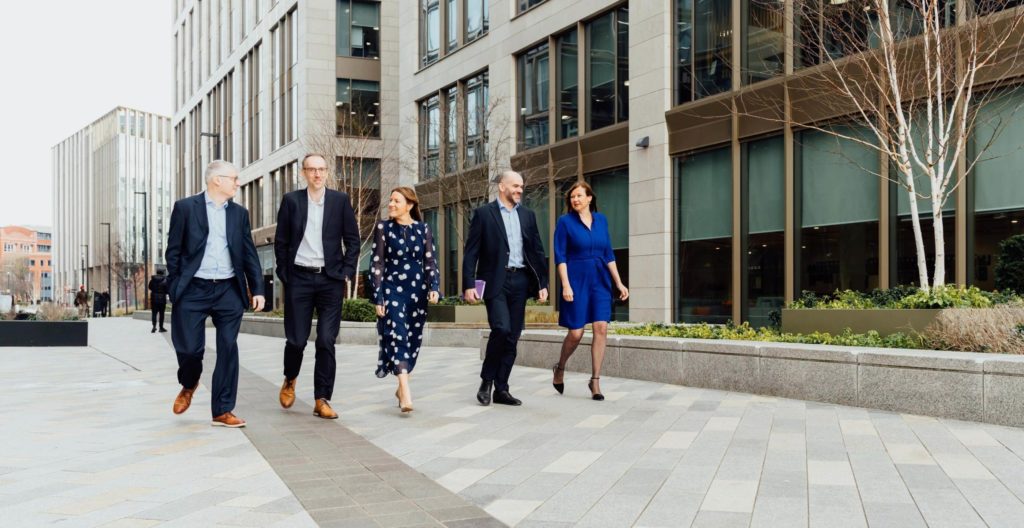
Bucking the retail trend: what impact on property?
Tuesday 9th February 2021
Construction output was down by as much as 40 per cent at the peak of the first coronavirus lockdown period, leading to shortage of space across many sectors as contractors work to get back on schedule. Joanne Fearnley, partner and retail property expert, examines the impact on out-of-town retail space, where demand for new sites remains high.
We all know that the retail sector is struggling. Forced closures and increased online shopping during the COVID-19 pandemic have compounded existing challenges such as business rates. In the property sector, this should make it easier for willing tenants to source property and to complete deals, possibly even with better terms than they might previously have expected to negotiate. But dig a little deeper and it becomes clear that this is a not a universal trend.
Out-of-town retail in particular tells a very different story, where asset-led landlords have the upper hand as buoyant retailers are finding it harder than they might expect to agree terms and complete property deals. In fact, those bucking the trend in retail are struggling to progress their expansion plans – and here’s why.
Construction output challenges
To identify the issue, we have to go back to April 2020 when, at the peak of the coronavirus lockdown, UK construction output fell by a record 40.1 per cent. It was an inevitable slump, in a month when the overall UK economy declined by 20.4 per cent according to ONS figures. Thankfully, construction output has grown in the months since, but even with record monthly growth of 23.5 per cent in June, it remained nearly a quarter below pre-COVID-19 levels at that point.
These site shutdowns in April and beyond had an inevitable knock-on effect on property across all sectors. But perhaps none more so than a polarised retail sector, where some retailers are struggling whilst others continue to accelerate the expansion of vast out-of-town store portfolios.
High street vs out-of-town
Even before coronavirus, there were different fortunes between high street and out-of-town retail which impacted on property transactions.
The high street has been on a downwards trend, with parking charges, online shopping trends and business rates rises all contributing to an incredibly challenging climate for bricks and mortar retailers (and major landlords) in recent years. The Centre for Retail Research shows that 43 retail brands had gone into administration in the UK in both 2018 and 2019. By 10 June 2020, another 29 had failed, affecting 1,481 stores and 39,175 jobs this year alone.
Elsewhere, those operating in the out-of-town retail sector have benefited from cheaper rents, more space, better facilities and free parking, with continued portfolio expansions from discount and value retailers in particular.
The retail mix at retail parks also lent itself well to the ‘essential retail’ classification during the first lockdown, providing further resilience when compared with the high street. Research from Savills shows more than half (54 per cent) of retail floor space that was eligible to stay open during the first lockdown was out-of-town, with the remaining 46 per cent made up of high street, shopping centres and individual shops.
The impact on out-of-town retail space demand
Fast forward back to Q4 of 2020, and all of this has thrown up some interesting analysis of the retail property market.
The general expectation is that with fewer tenants looking to take space in a flailing retail market, those that do remain willing to transact are arguably in an even stronger position than recent years. Indeed, this appears to be the case on the high street.
On retail parks, however, it is a very different story. This combination of a drop in construction output together with strong resilience (and in some cases buoyancy) from out-of-town retailers has inevitably led to a shortage in space. Competition for new retail space from successful retailers is high, giving asset-led landlords in particular an upper hand.
Deals are slower as a result. Rather than closing deals to secure tenants in what would appear to be a declining retail market, landlords are wise to the specific growth categories within retail. Many are hanging back to see what the recovery period in 2021 looks like, leaving discount and value retailers in particular finding it harder to secure the new space they need to continue expansion.
Time will tell how long this will continue in 2021, but for now it seems bucking the retail trend poses challenges of a new kind.
For more information on our retail or commercial property experience visit our pages below, or contact Joanne.



